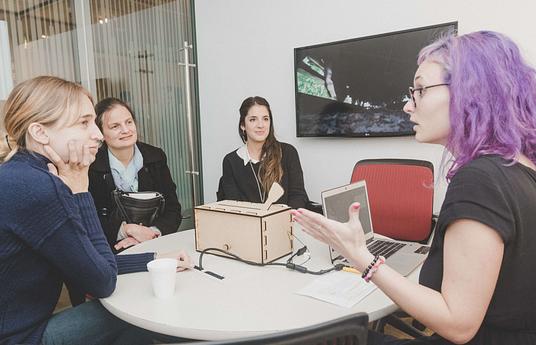The Raranga Matihiko programme was created to support equity in education, access to rich digital technology learning and equity in access to experiences. The project is led by the Museum of New Zealand Te Papa Tongarewa in collaboration with its partners. Current partners are Waitangi Treaty Grounds and Auckland Art Gallery.
In Raranga Matihiko the pedagogy supports students, teachers and family to all be learners. Teachers are supported to build their confidence and knowledge in digital technologies and to integrate this learning throughout the curriculum. Family gain knowledge of digital technologies, the rich museum collections and how to support their children. Museum & Gallery educators facilitate, at the museum or gallery, teacher only learning days and teacher and learner learning days with whānau in support. The learning of the teachers and the family means learning opportunities for learners are maximised long after the actual programme is completed. Students are from 5-14 years of age. Each group spends two days at their location museum, with transport provided at no cost.
No single programme is identical. Each class has a bespoke programme plan designed for their learners based on their interests.
The programme builds capability within communities and is transferrable across topics and foci as well as scalable across the country/world. It has delivered over 200,000 learning hours to students.
“Raranga Matihiko is a highly effective and responsive learning system. Its success is the result of positive museum-school relationships built over time; collaboration between museums and museum facilitators; quality programme design that integrates digital technologies with local curriculum, taonga, and histories; expert co-facilitation that models Treaty partnership and caters for both Māori and English-medium settings; and proactive removal of equity barriers to school and student participation.” - Dr Melanie Riwai-Couch, Evaluation Associates, Nov. 2020
The success of this programme has been co-designing each programme with the community; access to taonga/collection items and museum experiences, excellent facilitators and the focus on equity of experience and learning. We are always happy to talk about how the programme works and what we believe has made it successful.


